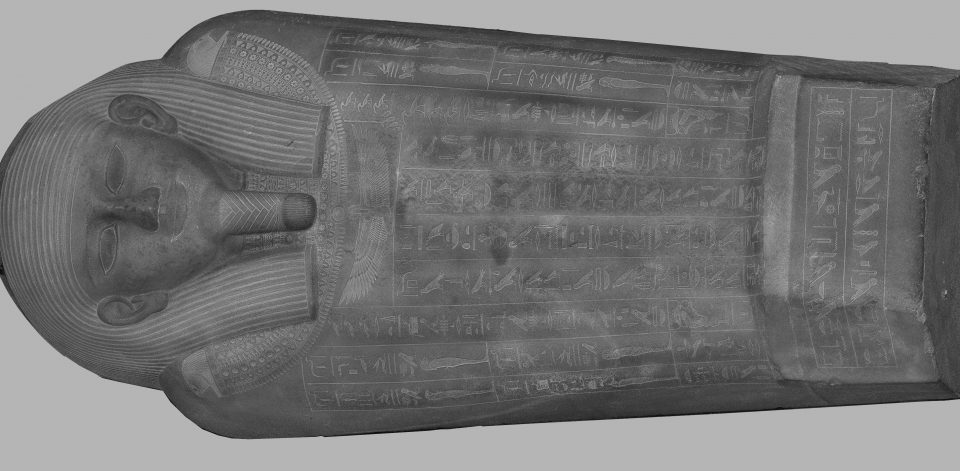
By CDH Guest Author on March 7, 2016
What if you could view an ancient artifact online in 3D, zooming in on and selecting texts on the object to view a translation? You might be able to visualize how the positioning and the reading direction of texts interact with the 3D surface they’re inscribed upon to create an object that the Ancient Egyptians would have viewed as magically charged. On a coffin lid, for example, a spell to protect the heart may be inscribed on the area corresponding to the chest—an important detail which is lost in most print publications.
I’m a second year graduate student in Near Eastern Studies at UC Berkeley, and I’m working on a project directed by Dr. Rita Lucarelli to view the placement of Book of the Dead spells on coffins in 3D. Last week, I attended the Metadata Central conference at UCLA to better understand the concept of metadata as it is used in Digital Humanities projects.
I came into the conference a little puzzled: what is this “metadata” thing, and more importantly, how do I implement it? Is it tags on photographs? What makes it “meta”? It turns out that Metadata is just “data”. It is a set of information that describes a resource, whether that resource is an object in a museum or a picture on your hard drive. For example, a model of a coffin might have an ascension number, a type, an owner, and an ascension date. A book might have a title, author, ISBN, and publisher. For the 3D Book of the Dead project, which will be a website that can display models and information for many coffins, the metadata will be the information that goes into my database and gets pulled out of the database to display on screen when the user clicks on a text or displays a new coffin.
A big problem facing the emerging field of digital humanities is how to archive and publish digital material. Writing on paper can be nearly immortal. Websites hosted for a monthly fee and programs on a floppy-disks are much more ephemeral. This was a big focus of the conference. Some projects can be best archived if the owner provides a version of a digital resource that can be printed into a book. Other projects might facilitate archiving by implementing an API that returns an XML file to the user, expressing the information stored in the database with a standard set of descriptors, like those provided by Dublin Core.
A good rule of thumb is to find out what technologies your library’s IT department is comfortable with before you start on your project. Drupal is a very popular framework for building Digital Humanities projects as it doesn’t require coding knowledge. Because of this popularity, many university library IT departments know how to archive a Drupal project.
The 3D Book of the Dead project might be a bit tricky to archive. A Drupal project would not fit our needs, and we need to build custom software to view the 3D models online. These 3D models consist of geometry: points in space and the mathematics used to orient them, and textures: flat images that are wrapped around geometry to provide photorealistic color and detail. In our case, it might be best to use a combination of techniques to archive our project. We could provide an interface where the archivist could retrieve our database entries as marked-up text in a standard format: for example XML with Dublin Core elements. We could write a separate mechanism to export the model itself in a non-proprietary format. This way, in theory, even if the viewing software for the model is obsolete, someone could write a simple program to display the model. One of our greatest challenges will be to preserve our project as a useful tool for learning and research even after the technology on which it depends is obsolete.
The Metadata Central project was supported in part by funding from the University of California Presidential Faculty Research Fellowships in the Humanities, MR-15-328710.
Photo courtesy of Dr. Rita Lucarelli
Kea Johnston is a second year graduate student working towards a PhD in Egyptology at UC Berkeley. In a former life, she was a programmer for multiple video game companies. She is interested in most things Ancient Egyptian but specializes in funerary art.
